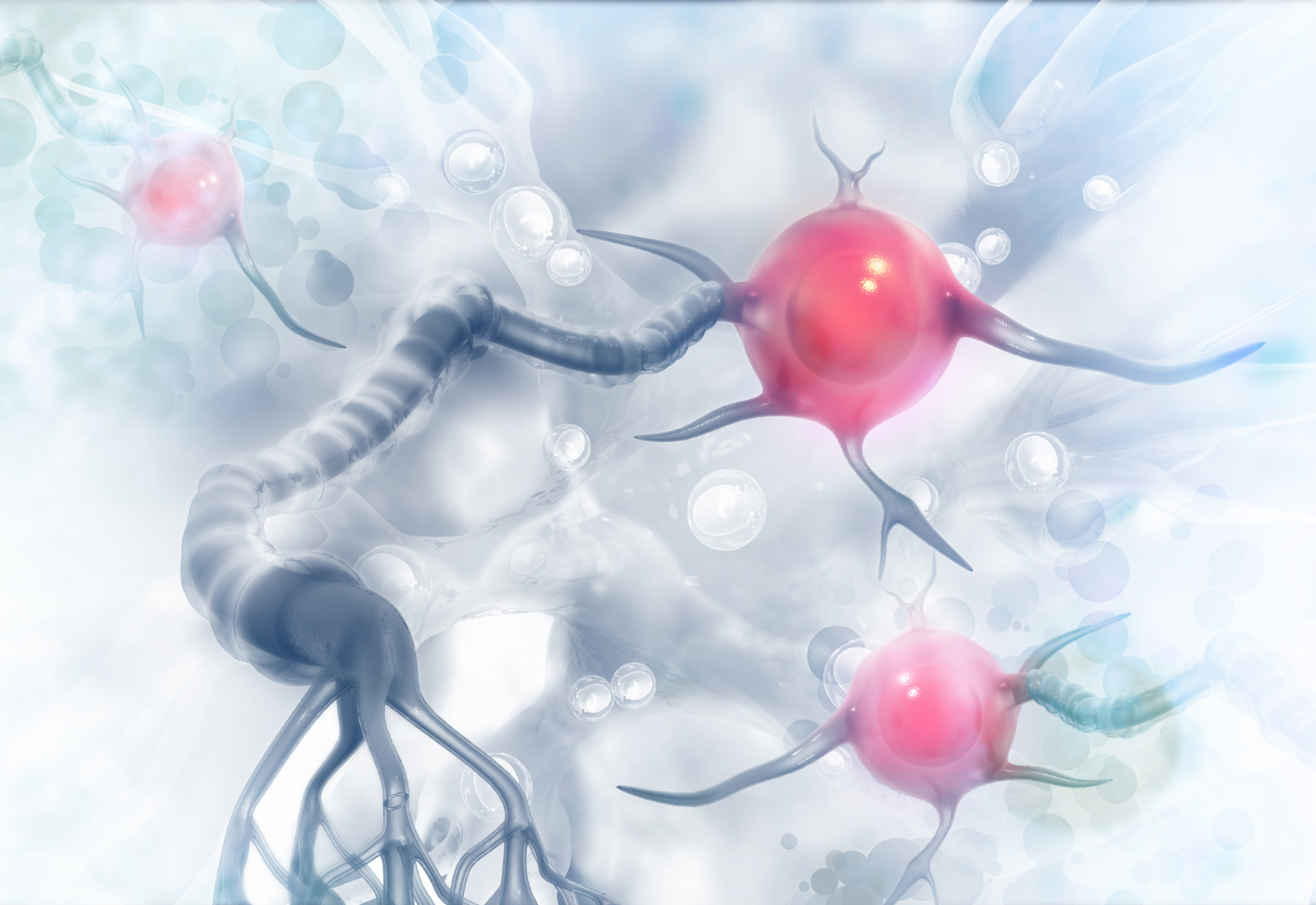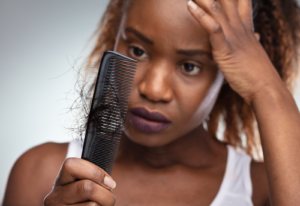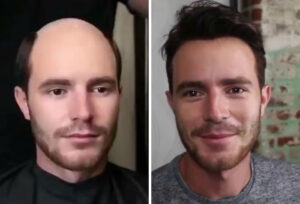Hair loss can be a distressing and challenging experience for both men and women. While there are numerous factors that can contribute to hair loss, one of the lesser-known culprits is hormonal imbalances. In this comprehensive guide, we will delve into the intricate relationship between hormones and hair loss, exploring the various hormonal factors that can lead to hair thinning and shedding.
Hormones and Their Role in Hair Health
Our bodies produce a variety of hormones, each with its unique functions. Several hormones are closely linked to hair health, and imbalances in these hormones can result in hair loss. Here are some of the key hormones involved:
1. Dihydrotestosterone (DHT)
DHT is a derivative of testosterone, a male sex hormone. High levels of DHT can cause hair follicles to shrink, leading to thinner and shorter hair growth. This hormone is a primary contributor to male pattern baldness.
2. Estrogen
Estrogen is a female sex hormone. It helps promote hair growth and maintain the hair’s overall health. A drop in estrogen levels, such as during menopause, can lead to hair thinning.
3. Thyroid Hormones (T3 and T4)
Thyroid hormones play a crucial role in regulating the body’s metabolism. An overactive or underactive thyroid (hyperthyroidism or hypothyroidism) can disrupt the hair growth cycle, leading to hair loss.
4. Cortisol
Cortisol is the body’s primary stress hormone. Chronic stress can lead to an overproduction of cortisol, which can contribute to hair thinning and hair loss.
5. Insulin
Insulin is a hormone that regulates blood sugar levels. Resistance to insulin, often associated with conditions like polycystic ovary syndrome (PCOS), can lead to hair loss.
The Complex Link Between Hormones and Hair Loss
Hair loss related to hormonal imbalances can manifest in various ways, depending on the specific hormones involved and the individual’s genetic predisposition. Here are some common patterns of hormonal hair loss:
Male Pattern Baldness (Androgenetic Alopecia)
Male pattern baldness is the most common cause of hair loss in men, affecting 30-50% of men by age 50. It is primarily linked to high levels of DHT. DHT plays a crucial role in the development of male sexual characteristics during puberty but can have adverse effects on hair follicles as men age.
This condition typically follows a distinct pattern of receding hairlines and bald spots on the crown. The hair follicles affected by DHT begin to miniaturize, resulting in thinner and shorter hair growth. Eventually, these follicles may cease to produce hair altogether. Understanding the genetic component of male pattern baldness is essential, as it often runs in families.
Female Pattern Baldness
In contrast to the more conspicuous pattern seen in male pattern baldness, female pattern baldness takes on a subtler but equally distressing form. It is characterized by diffuse hair thinning across the entire scalp, making it challenging to pinpoint the initial signs.
The intricate web of hormones within a woman’s body plays a pivotal role in this type of hair loss. Female pattern baldness is often intimately connected with hormonal changes, particularly during menopause. As a woman approaches menopause, her body undergoes a significant transition marked by a decline in estrogen levels. This hormonal shift can disrupt the delicate balance necessary for healthy hair growth, leading to the onset of female pattern baldness.
Thyroid-Related Hair Loss
Thyroid disorders can disrupt the hair growth cycle, leading to hair thinning and loss. Hypothyroidism (underactive thyroid) can cause hair to become brittle and break easily, while hyperthyroidism (overactive thyroid) can lead to excessive shedding. Signs of thyroid-related hair loss include:
- Excessive Hair Shedding: Noticeable increase in hair shedding when brushing or washing hair.
- Thinning Hair: Hair becomes noticeably thinner, particularly on the scalp.
- Brittle Hair: Hair may become dry and brittle, leading to breakage and split ends.
- Dry Scalp: The scalp may become excessively dry and flaky.
- Hair Texture Changes: Changes in hair texture, such as becoming coarse or fine.
- Slower Hair Growth: Hair growth rate may slow down, resulting in shorter hair.
- Changes in Hair Color: Premature graying or changes in hair color may occur.
- Sparse Eyebrows: Thinning or loss of eyebrow hair can also be a sign of thyroid-related hair issues.
- Other Symptoms: Fatigue, weight gain or loss, mood swings, and changes in body temperature regulation are common signs of thyroid disorders and may co-occur with hair loss.
Hormonal Imbalances in PCOS
Women with polycystic ovary syndrome (PCOS) often experience hormonal imbalances, including elevated levels of androgens. This can lead to male-pattern hair loss, excess facial and body hair (hirsutism), and irregular periods.
Managing Hormonal Hair Loss
The good news is that many cases of hair loss related to hormonal imbalances can be managed or treated effectively. Here are some strategies to consider:
Lifestyle Modifications
- Stress Management: Practicing stress-reduction techniques such as yoga, meditation, and deep breathing exercises can help lower cortisol levels.
- Healthy Diet: Eating a balanced diet rich in essential nutrients like vitamins and minerals can support hair health.
- Exercise: Regular physical activity can improve blood circulation to the scalp, promoting hair growth.
Medications
Medications offer a range of treatment options for individuals experiencing hair loss. One widely accessible over-the-counter choice is topical Minoxidil, known for its ability to stimulate hair growth and slow down the progression of hair loss. For more specific conditions like androgenetic alopecia or hormonal imbalances, prescription medications can provide effective solutions. Consulting with a healthcare provider or a hair loss specialist is crucial to determine the most suitable medication-based approach based on your individual needs and condition.
Hormone Management
- Thyroid Medication: If hair loss is linked to thyroid disorders, medication to regulate thyroid hormones, such as levothyroxine for hypothyroidism or anti-thyroid drugs for hyperthyroidism, may be prescribed by a healthcare provider.
- Hormone Balancing for PCOS: In cases of polycystic ovary syndrome (PCOS) which often involves hormonal imbalances, hormone therapy may be recommended to restore balance. This may include birth control pills or anti-androgen medications to reduce excess androgens.
- Hormone Replacement Therapy (HRT) for Menopause: Menopausal hair loss can be managed through hormone replacement therapy, where estrogen and progesterone levels are supplemented to counteract the hormonal changes responsible for hair thinning.
Hair Restoration Treatments & Hair Replacement Options
For individuals with advanced hair loss or those who prefer more immediate results, hair restoration procedures and hair replacement options are available. These may include:
- Hair Transplantation: A surgical procedure that involves transplanting hair follicles from one area of the body, typically the back of the head, to the areas with hair loss. This method provides a long-lasting solution for restoring natural hair growth.
- Platelet-Rich Plasma (PRP) Therapy: A non-surgical approach where a small amount of a patient’s own blood is drawn, processed to concentrate the platelets, and then injected into the scalp. PRP contains growth factors that can stimulate hair follicles, promote hair growth, and improve hair thickness.
- Human Hair Wigs: Wigs made from natural human hair offer a quick and effective way to conceal hair loss and achieve a desired hairstyle. They come in various styles and colors, providing flexibility and a natural look.
- Hair Extensions: Hair extensions are an option for adding volume and length to existing hair. They can be attached to natural hair strands, providing a fuller and thicker appearance.
- Hair Systems (Non-Surgical Hair Replacement): Non-surgical hair replacement systems, also known as hairpieces or toupees, are custom-made solutions designed to match an individual’s hair color, texture, and style. They are attached to the scalp using adhesive or clips and provide a seamless and natural look.
Seeking Expert Help
If you are experiencing hair loss and suspect it may be related to hormonal imbalances, it’s essential to consult with a hair loss expert or a healthcare professional. They can perform a thorough evaluation, diagnose the underlying cause, and recommend the most suitable treatment options tailored to your specific needs.
Why Choose Eldorado for Baltimore’s Best Hair Restoration and Replacement Services?
- Experienced Professionals: Our team includes skilled hair restoration specialists who have a deep understanding of hormonal imbalances and their impact on hair loss.
- Personalized Treatment Plans: We recognize that each individual’s needs are unique. Our experts will create a personalized treatment plan to address your specific concerns and goals.
- Cutting-Edge Techniques: Eldorado utilizes the latest advancements in hair restoration technology and techniques to ensure the best possible results for our clients.
- Compassionate Care: We understand the emotional toll that hair loss can take. Our team provides compassionate care and support throughout your hair restoration journey.
- Proven Results: Eldorado has a track record of delivering outstanding results for our clients, helping them regain their confidence and self-esteem.
Don’t let hormonal imbalances rob you of your confidence and self-assurance. Contact Eldorado, Baltimore’s best hair restoration and replacement clinic, today to book a free hair analysis and take the first step towards a fuller, healthier head of hair. Rediscover your confidence and embrace a new chapter of hair wellness with Eldorado.





